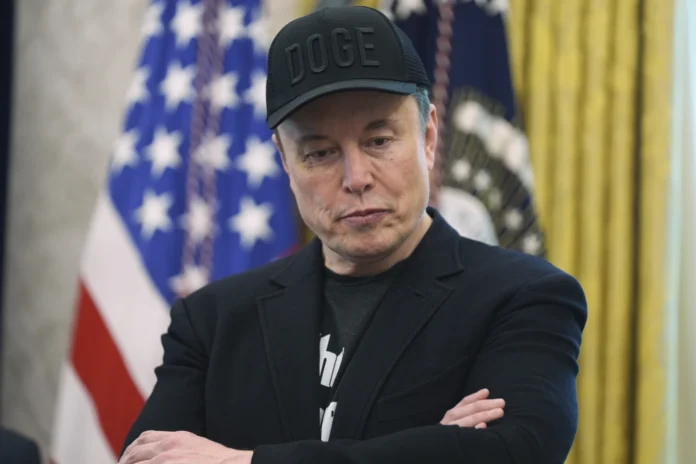Many believe that Elon Musk will fail miserably in his attempt to significantly reduce government spending, failing miserably even in his most modest aspirations.
There was an easier way to do it.
His team of software engineers and other high-wattage tech talent had a big flaw, according to experts from all sides of the ideological spectrum: he failed to deploy individuals who knew the inner workings of the government.
Musk had originally aimed for $2 trillion, which is about the same as the whole federal deficit, and even that might not have been enough.
Musk reduced his target for savings from $2 trillion to $1 trillion to $150 billion before his last day as director of the Department of Government Efficiency on Friday.
According to the latest DOGE numbers, President Clinton’s attempt to reduce federal bureaucracy saved $240 billion by the conclusion of his second term, far surpassing Musk’s efforts. Over 400 thousand people lost their jobs with the federal government as a result of Clinton’s initiatives. The government estimates that there are 2.4 million persons working as civilians for the federal government. This number does not include military troops or postal workers.
Despite cutting thousands of jobs, Musk apparently failed to alter the general trend of government expenditure. According to the Yale Budget Lab’s examination of Treasury statistics, the rate of money leaving the government coffers is higher than in the last two years.
“What they were aiming for was completely out of reach. Cato Institute VP of economic and social policy research Alex Nowrasteh remarked that the libertarian think tank’s performance criteria were consistently lowered. “A well-informed DOGE team would have known better than to make unrealistically high claims. They make it so they’ll fail.
During a Friday event at the White House with Trump, Musk reaffirmed the objective of saving at least $1 trillion and said that his staff will remain in place.
In fact, this marks the beginning of DOGE, not its conclusion. As time goes on, the DOGE squad will only become stronger. In the Oval Office, Musk, clad in a black jacket over a T-shirt with the insignia of “The Dogefather,” declared, “It’s permeating throughout the government.” “Sure, we’re targeting $1 trillion in the future.” Preliminary data indicates that the target will be very challenging to achieve.
As a result of his reliance on IT specialists, Musk stumbled his way through Washington and occasionally laid off workers who were crucial to Trump’s goals.
Concurrent with efforts to speed up the deportation of those in the United States unlawfully, immigration judges were singled out for special scrutiny. Similarly, techs from the BLM were fired from the DOI, even though they were crucial in paving the way for oil development, which was a top objective for the Trump administration.
Despite efforts to reduce spending, several former employees were rehired, which increased administrative costs.
According to Nowrasteh, Musk’s team might have prevented similar errors in several departments if it had specialists on staff who were knowledgeable about the federally mandated roles for activities like immigration enforcement and drilling.
“A more knowledgeable DOGE team would have avoided a lot of unforced errors,” Nowrasteh remarked.
Conservative Americans for Tax Reform president and founder Grover Norquist took a more positive take on Musk’s efforts, arguing that they should be evaluated not just by the amount of money saved but also by his skill in drawing attention to the problems.
You have no idea how widespread the cancer is until you locate the source of the problem. “A cancer cell has been discovered,” he remarked.
According to Norquist, Congress needs to step up and establish a permanent framework to carry on from where Musk is leaving off.
According to Norquist, “it was only accomplished because of a guy like Musk, who can come in and shake things up.” He said, “I just think it’s going to be seen five to ten years from now as something very big and very permanent.”
Their efforts were governed by more modest budgetary aims than DOGE, according to Elaine Kamarck, a major member in Clinton’s government efficiency campaign. Vice President Al Gore spearheaded the effort, which primarily targeted modernizing outmoded procurement and employment practices in an effort to make the government more accessible to its constituents.
Even into Clinton’s second administration, it persisted, taking years.
As for the outside analysts, they were seasoned government civil servants with knowledge of the government as a whole, and we approached the process carefully, department by department, according to Kamarck.
There were budget surpluses in each of Clinton’s last four fiscal years in office, and by the conclusion of his second term, he had saved $136 billion—more than $240 billion today—thanks to his efforts.
According to Kamarck, who described Musk’s style as “chaotic,” the company’s missteps and oversights might lead to future problems like transportation issues, inadequate disaster response, or delayed entitlement benefit payments.
That something will happen is becoming more likely due to “these things that really hurt presidents,” as Kamarck put it. Chris Megerian of the Associated Press was in Washington, DC, and contributed to the story.
